Unveil The Splendour Of Amar Mahal Museum On Your Next Jammu Trip In 2025
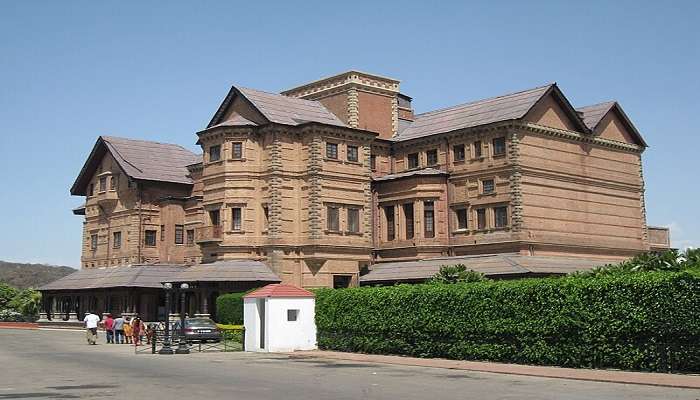
Amar Mahal Museum is located in the heart of Jammu, on the banks of the Tawi River. This museum represents the cultural ethos of the place. This marvellous architecture, earlier being a palace and presently showcasing the lavish lifestyle of the Dogra dynasty that used to rule that place, represents the rich heritage that place holds. Such a striking facade, being made of red sandstone in the French style, can certainly rivet any visitor before he enters it. It is through this that Amar Mahal truly becomes a time machine, with a treasure trove of artefacts, paintings, and documents of immense historical value, showcasing the artistic, cultural, and political legacy left behind in this region. Exotically done, selective exhibits in this mansion-turned-museum visit—a peep into the past—alive.
History Of Amar Mahal Museum
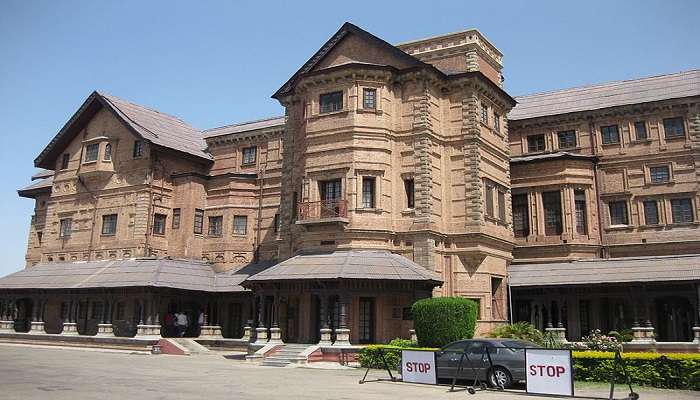
The Amar Mahal Museum dates back to the late 19th century, when Maharaja Amar Singh, the then-ruling Maharadhiraj of Jammu and Kashmir State, commissioned it. Built in 1890, the palace was meant to represent a residence in one of the finest European styles coupled with local taste.
It was a royal residence until 1947, when the last ruling Maharaja, Hari Singh, decided to convert it into a museum to hold the land’s rich culture. In 1975, the actual transformation of the palace into a public museum took place under the aegis of the Hari-Tara Charitable Trust. It was, consequently, a moment of real cultural change in Jammu when space once, and only exclusively reserved for the Dogra royalty, opened before the public gaze, and with this, an assurance that the history left behind by that dynasty of rulers would be kept open for the coming generation to know and learn from.
Also Read: Best Places To Visit In Jammu
Architectural Marvel Of Amar Mahal Museum
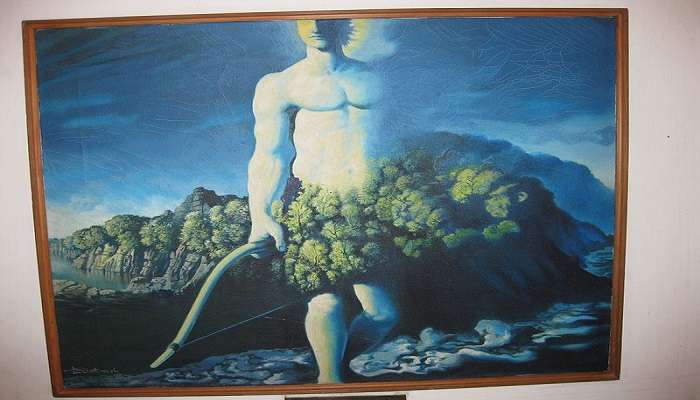
Amar Mahal Museum is one of the architectural wonders of twentieth-century India. The most striking example of Indo-European architecture is that it fuses two styles in quite a unique way that is different from any other heritage buildings in this region. Externally, the building has red sandstone, similar to that seen in the French châteaux, with intricate carvings and elegant balconies. Sloping roofs and tall windows further reflect the European style in adaptation to the local climate.
Inside, the grandeur prevailed on the grounds: large halls with great heights under the detailed chandeliers, finely worked woodwork, and an eminent central hall that welcomes with its grand wooden staircase, curling up to take visitors up to the other galleries and exhibition spaces. The architecture itself has imprinted on the story of the crossroads at play. This reflects dogra tastes, which are highly cosmopolitan in nature and openness and have turned toward global influences with strong moorings in their roots of Jammu.
Nearby Attractions Of Amar Mahal Museum
Here is the list of top attractions you can’t miss while visiting the Amar Mahal Museum.
1. Bahu Fort
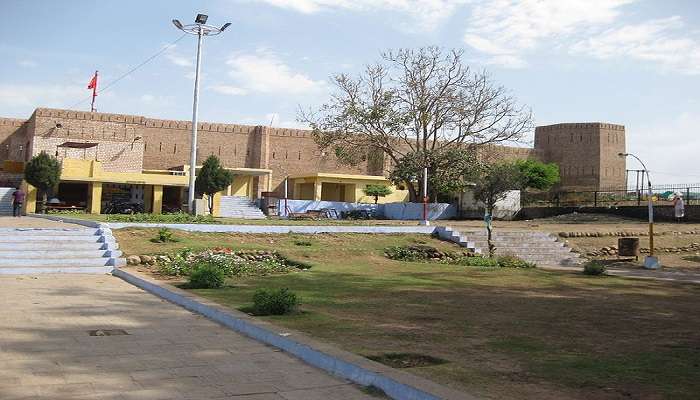
Located on a plateau overlooking the Tawi River, the Bahu Fort is one of the oldest forts in Jammu. The fort was built over 3,000 years ago by Raja Bahulochan. It overlooks the Jammu city and is home to the Bawey Wali Mata temple. In the architecture, one finds a potpourri of Rajputana and Mughal styles, sturdy walls adorned with carvings narrating stories of bygone eras. One can walk along the ramparts of this fort, get a sneak peek of the several ancient artefacts displayed inside, and feel tranquil in the serene environment of the Bagh-e-Bahu garden, which combines beautifully with a visit to the Amar Mahal Museum.
Location: Bahu Road, Jammu
Entry Fee: ₹ 10 for Indians, ₹ 50 for Foreigners
Timing: 8:00 AM to 7:00 PM, all days of the week
Distance from city centre: 5 km
Related Post: Things To Do In Jammu
2. Raghunath Temple

This renowned temple is scrumptiously built with a resemblance to the Mughal style. The 19th-century temple complex was built by Maharaja Gulab Singh, with seven shrines, each with a curvilinear tower in the Pahari architecture. Though the presiding deity is Lord Rama with his consort Sita along with two brothers, Lakshmana and Hanuman, the walls are plated with intricate gold sheets, and surfaces on the interiors feature beautiful sculptures and paintings, which depict events from Ramayana. This temple has great serene spirituality and a place of historical importance that fascinates tourists keenly interested in Jammu’s religious and cultural past.
Location: Raghunath Bazaar, Jammu
Entry Fees: Nil
Timing: 6:00 AM to 10:00 PM
Distance from city centre: 1 km
3. Mubarak Mandi Palace
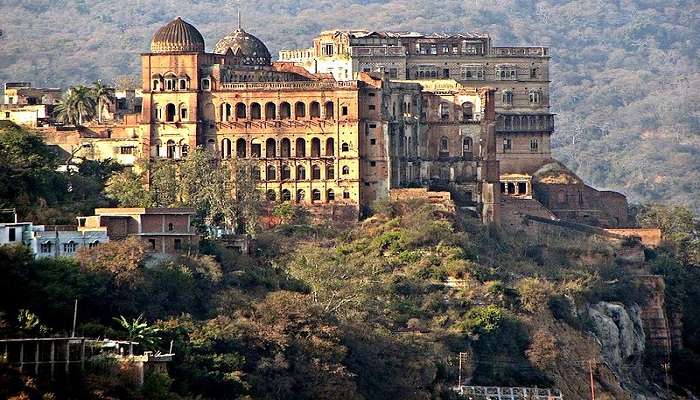
The colossal structure is a blend of a unique style of architecture consisting of buildings in the Rajasthani, Mughal, and European modes. This complex was the erstwhile royal residence of the Dogra dynasty. In this vast complex, begun as far back as 1824, the Darbar Hall, Sheesh Mahal, and Pink Palace are to be found. Though restoration work is currently in parts, one can still visit the rest of the parts, which bring to life the lives of the Dogra rulers replete with extravagance. Almost every ceiling is graced with frescoes, and innumerable varieties of arches and detailed stonework make it a photographer’s paradise—indeed, an absolute must for people interested in this region’s royal history.
Location: Mubarak Mandi, Jammu
Entry Fees: INR 10 for Indians, INR 50 for foreign tourists
Timing: 10:00 AM to 5:00 PM (Mondays closed)
Distance from city centre: 2 km
Related Post: Akhnoor Fort
4. Mansar Lake

An excellent spot away from the boiling and sizzling climate of the city, Mansar Lake is a beautiful freshwater lake surrounded by thick forest. It is a site of excellent religious historicity in Hindu mythology, hence getting a lot of visiting pilgrims and nature lovers. One can chill here, take a boat ride on its calm waters, spot different species of birds, or even take a simple walk. A wildlife sanctuary also includes animals such as the spotted deer and peacock. With the scenic beauty and religious significance included in it, Mansar Lake is an apt confluence of paradise and heritage. That makes it an excellent vacation from Jammu on a day’s excursion.
Location: Mansar, Jammu
Entry Fees: Free of cost (boating charges apply)
Timing: 24 hours
Distance from city centre: 62 km
5. Hari Niwas Palace
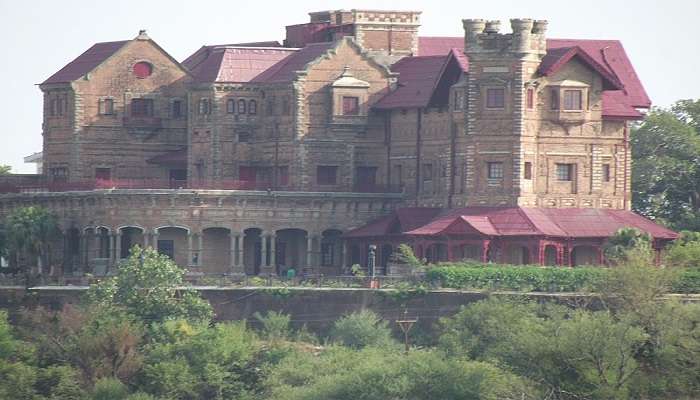
This is not exactly a point of interest but more of a royally luxurious experience that one must indulge in. This stately tower was built in the 1940s to be the residence of the Maharaja of Jammu and Kashmir, and today it stands as a heritage hotel. The palace’s grand facade, sprawling lawns, and luxurious interiors reflect a mix of colonial and Dogra architectural styles. Only others are allowed to enter the public areas or restaurant to view from the building’s exterior without booking accommodation meant for staying overnight. Hari Niwas Palace makes Jammu one of its links—a live connection with its Royal past and, in every small expression, a fitting foil for the history-soaked heritage experience of the Amar Mahal Museum.
Location: Circular Road, Jammu
Entry Fees: Open to in-house guests at a cost equal to room tariffs
Timing: Always open for in-house guests
Distance from city centre: 3 km
Related Post: Hotels In Baramulla
How To Reach Amar Mahal Museum
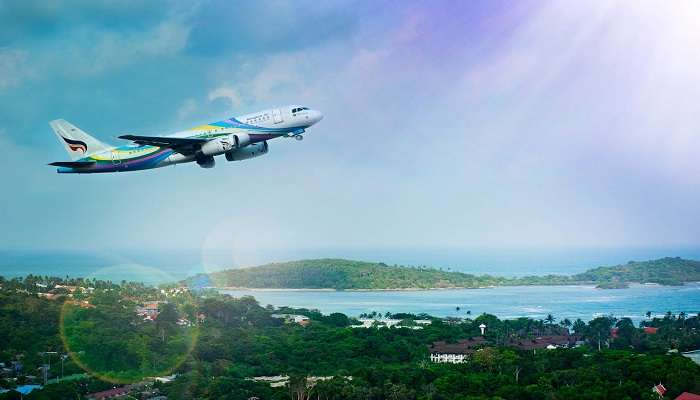
By Air
Amar Mahal Museum is accessible from the nearest airport in Jammu, Jammu Airport or (IXJ), and the distance is merely 7 kms. Road transport: a person can hire a taxi or a cab from the airport, and they will directly lead him or her to the museum.
By Train
The railheads are Jammu Tawi, which is at a distance of 5 kms from the museum. For instance, after reaching the railway station, one can hire a taxi, take an auto rickshaw, or travel by bus, all local transport that we have in abundance and can take one to the museum.
By Bus
Jammu is well-connected by road, and you can reach the museum by bus. Roads significantly connect Jammu; therefore, the museum can be accessed by bus.
Interstate Buses: If you are coming from other cities, you can take an interstate bus to the Jammu bus stand.
Local Buses: Once one has reached Jammu, one can easily travel on the local buses that ply towards the museum’s location.
By Taxi/Cab
Public transport, especially taxis and cabs, is readily available in the city of Jammu. An auto-rickshaw or a taxi can be hired. Also, through some of the applications that allow one to book a taxi directly, one can go to the Amar Mahal Museum from any corner of Jammu.
You May Also Like To Read: Kounsarnag Lake
The Amar Mahal Museum is a fabulous specimen of the rich cultural heritage of Jammu, bringing to the fore in this unique way the region’s royal past lies. The transformation from a palace to a public museum is democratization in history itself, making the treasure of the Dogra rule accessible to one and all. As one traverses through its long corridors full of invaluable artefacts, pictures, and historical documents, one does not find a relic of the past but gets involved in a living legacy that continues to create the identity of Jammu. Together with the historical sites and natural miracles, it composes a unique story of trip to Jammu.
For our editorial codes of conduct and copyright disclaimer, please click here.
Cover Image Credit : Nvvchar for Wikipedia
Frequently Asked Questions About Amar Mahal Museum
What is the time that Amar Mahal Museum is open?
Generally, the timings of the Amar Mahal Museum are from 10:00 AM to 5:00 PM, which includes Tuesday to Sunday. However, the museum remains closed on Mondays.
What is the entry fee of Amar Mahal Museum?
The entry fee in Amar Mahal Museum is generally INR 20 for Indian nationals and INR 100 for foreign nationals. The rates for this particular entry fee are subject to change.
Is interior photography or videography allowed inside the Museum?
Non-flash photography for personal use is allowed chiefly in almost all areas of the Museum. However, flash and professional equipment may need special permission.
How long does it take to see everything in Amar Mahal Museum?
The average visitor will spend some 1-2 hours in this museum, depending on one's interest in what is on display.
Are guided tours offered in the Amar Mahal Museum?
Typically, guided tours are made available. It is therefore advisable to enquire from the entrance point about group touring or call Musea in advance for touring services.
People Also Read:
Spiritual Museum Naval Aviation Museum Lamu Museum

Unveil the hidden treasures of the globe and turn every travel dream into reality. As a Content Writer, I am passionate enough to craft stories from ancient wonders to modern marvels. My words paint the picture-perfect itinerary for unforgettable experiences. Let my words be your trusted guide to immerse in the diverse culture and discover the beauty of the unknown.











